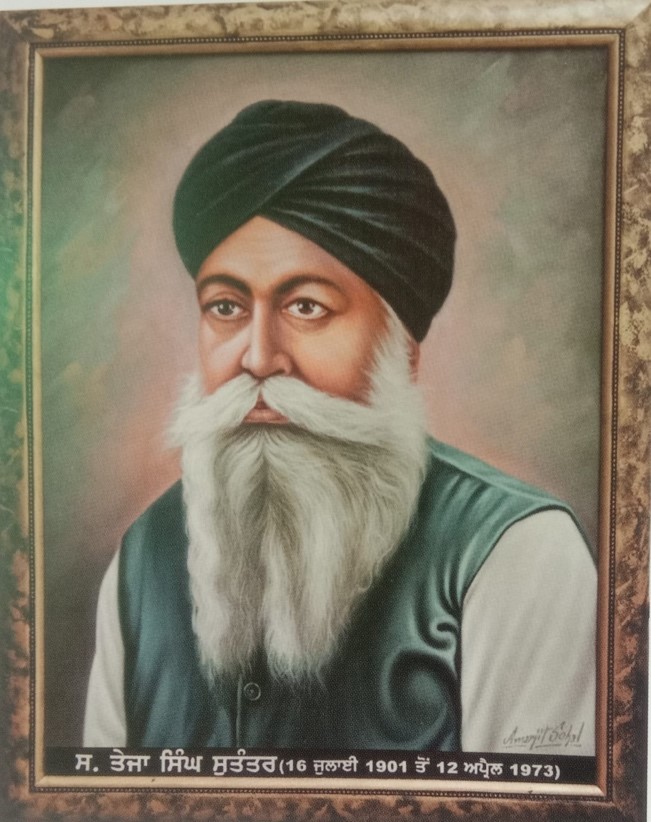Description

Disclaimer: Copyright infringement not intended.
Context
- Punjab CM unveiled a statue of Teja Singh Sutantar, former MP and revolutionary leader at Nihalgarh village in Sangrur district. This CPI leader, fought not only against colonial rule, but waged a struggle to secure the rights of the Punjab peasantry from feudal lords.
About Teja Singh Sutantar
- A Sikh preacher turned revolutionary, he was born Samund Sing at Aluna, a village in Gurdaspur district of the Punjab, on 16 July 1901.
Life during freedom struggle
- After the 1919 Jallianwala Bagh massacre, which had stirred patriotic sentiments in Punjabi youth, he joined the Akali Dal to participate in the movement of liberating gurdwaras from degenerate mahants.
- In September 1921 , he formed his own squad called ‘sutantar jatha’ (also called as swatantarmeaning free/independent).
- In its maiden attempt, the jatha successfully liberated the gurdwara in a village called Teja, in Gurdaspur district, from the mahants.
- This success earned him the moniker of Teja Singh Sutantar from his supporters.
- He would soon free another gurdwara, in Othian village, Gurdaspur, from mahants.
- In early 1923 , Teja Singh went to Kabul as a Sikh missionary. There he came in contact with a few leaders of the Ghadar Party, who, at the time, were preparing for their second attempt to overthrow the British government.
- The Ghadhar leaders persuaded Teja Singh to undergo military training – thus, in 1925, he joined the Turkish military academy under the pseudonym Azad Beg.
- He would eventually be granted Turkish citizenship and be commissioned into the Turkish army.
- After visiting several countries and briefly joining a university in Moscow in December 1934 , Teja Singh returned to India and became a prominent leader of communist party (CPI).
- He contributed revolutionary articles to the party journal, the Kirti, frequently writing about issues that plagued peasants.

Role in peasant upliftment
- Post-independence, Teja Singh, who a prominent leader of the Kisan Sabha, led a number of peasant agitations against the government and landlords.
- He was a key leader in the PEPSU Muzara movement, which started in the 1930s and went on till 1952.
- The movement was started by landless peasants (muzaras) in PEPSU (Patiala and East Punjab States Union, which included the districts of Mansa, Sangrur, Barnala, and parts of Bathinda, apart from Patiala) to obtain ownership rights of the land they had been tilling for generations.
- On March 19, 1949, four farmers in the Kishangarh village in Mansa were killed by security forces of the Maharajah of Patiala.
- The farmers would finally receive land rights in 1952.
Post-independence role
- After Independence, Teja Singh formed his Lal (red) Party with the former Kirti group of the Punjab Communist Party as the nucleus.
- Lal Party became an active constituent of the Punjab Riyasd Praja Mandal and campaigned for the merger of the princely states into the Punjab and against the tenancy laws prevalent in these territories.
- Teja Singh edited Lal Jhanda, a monthly in Urdu, and Lal Savera, a weekly in Punjabi, and contributed frequently to other papers and journals.
- He was a member of the Punjab Legislative Council from 1964-69 and was, in 1971, elected to the Lok Sabha.
|
PRACTICE QUESTION
Q) Discuss the contribution of Tej Singh Sutantar to the PEPSU Muzara movement and integration of the princely states. (250 words)
|

https://indianexpress.com/article/explained/explained-politics/punjab-cm-unveils-statue-of-teja-singh-sutantar-remembering-the-revolutionary-leader-8552757/















